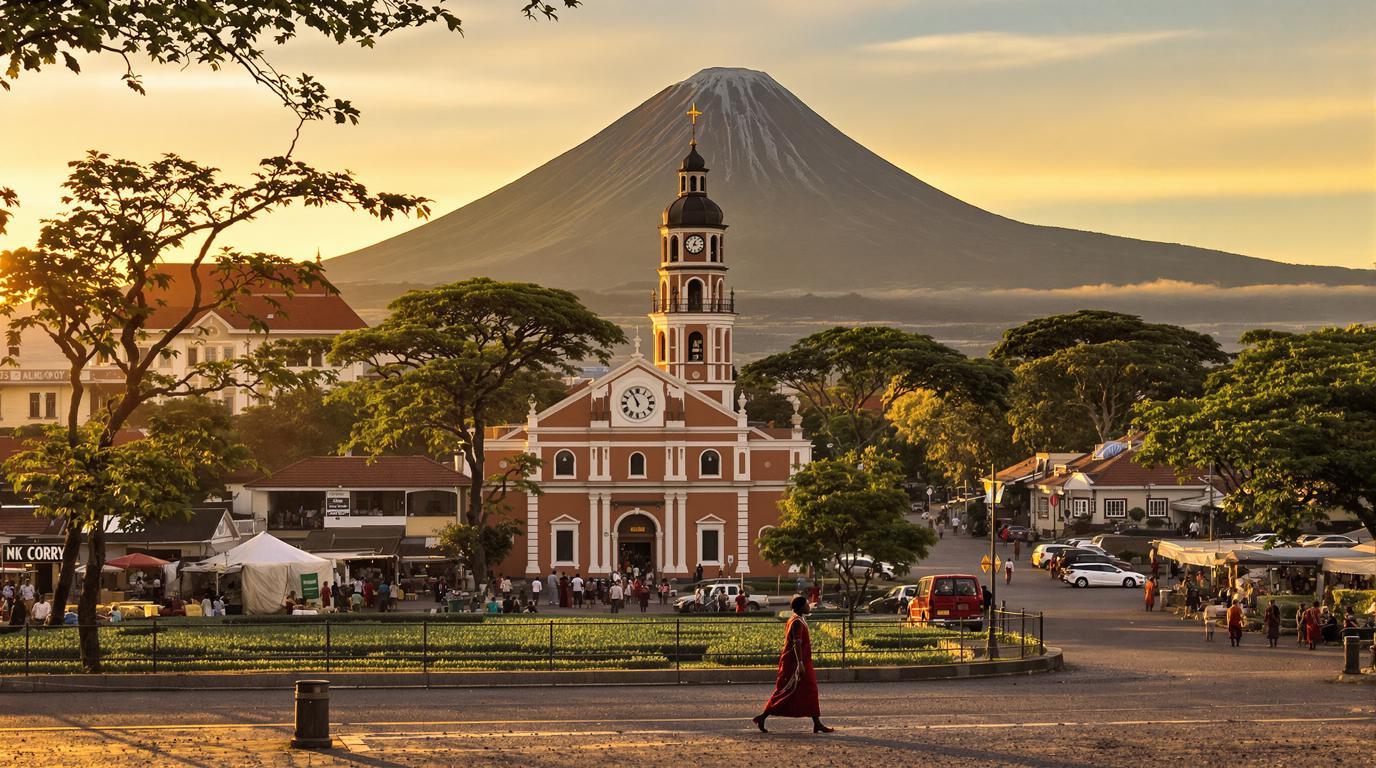Arusha: Tanzania’s Unsung Safari Gateway Where Adventure Meets Authenticity
Standing at the crossroads of East Africa’s most spectacular wilderness experiences, Arusha isn’t just a waypoint—it’s where safari dreams crystallize into reality. This vibrant Tanzanian city of 400,000 sits in the shadow of Mount Meru, serving as the launchpad for some of Africa’s most iconic adventures while hiding cultural treasures that many travelers rush past on their way to bigger names.
Where two worlds collide at Africa’s center point
Few travelers realize that Arusha sits almost exactly halfway between Cairo and Cape Town on the great Cape-to-Cairo route. The city’s famous Clock Tower marks what many consider the geographic midpoint of Africa, creating a symbolic crossroads where East African cultures blend with international influences.
“Our city is like Tanzania in miniature—all the country’s cultures meet here, creating something uniquely Arushan,” explains Joseph Meela, a local tour guide. “We’re the gateway to wilderness, but we have our own story to tell.”
The 48-hour safari secret most travelers miss
While most visitors rush straight to the Serengeti, savvy travelers spend their first days exploring nearby Arusha National Park. Just 30 minutes from the city center, this compact reserve offers wildlife viewing without the crowds—including rare black-and-white colobus monkeys swinging through the forest canopy and giraffes grazing against the backdrop of Mount Meru’s perfect cone.
For the adventurous, a three-day trek up Mount Meru offers stunning views of Kilimanjaro and serves as perfect acclimatization for those planning Africa’s most famous climb. The volcanic landscapes create a dramatic playground for photographers, especially at sunrise when the golden light bathes the peak.
Beyond the big five: cultural encounters that transform
Arusha’s true magic happens in its vibrant cultural spaces. The Cultural Heritage Centre houses Tanzania’s largest collection of traditional crafts, where master carvers transform ebony into intricate sculptures. Meanwhile, in the bustling central market, Maasai women sell beaded jewelry next to stalls piled high with colorful fabrics and tropical fruits.
For an authentic immersion, visitors can join guided tours to nearby villages where the Maasai and Meru people welcome guests to learn about their traditions. These experiences offer a deeper understanding of Tanzania than any wildlife sighting alone can provide—making Arusha ideal for travelers seeking cultural depth, like the authentic Greek islands that outshine Santorini.
Coffee culture that rivals Seattle’s finest
Tanzania’s volcanic soils produce some of Africa’s finest coffee, and Arusha sits at the heart of this aromatic tradition. The region’s coffee plantations offer tours where visitors learn about the journey from cherry to cup, ending with tastings that reveal complex flavor profiles shaped by the mountain terroir.
“Our arabica beans develop slowly at high altitude, creating a brightness and complexity that surprises many visitors,” notes Hannah Mollel of Tengeru Coffee Cooperative. “Coffee connects us to the global community while remaining deeply rooted in our land.”
The culinary revolution hiding in plain sight
Arusha’s food scene blends traditional Tanzanian flavors with international influences. From street-side nyama choma (grilled meat) stalls to innovative restaurants like The Blue Heron, the city offers unexpected culinary adventures. The spice markets burst with aromas that reveal Tanzania’s historic connection to the Indian Ocean trade routes, much like Malaysia’s legendary street food culture.
Small-town warmth in East Africa’s safari capital
Despite its importance as a tourism hub, Arusha maintains a relaxed, small-town atmosphere reminiscent of Montana’s hidden gems that welcome visitors without losing their identity. The city’s tree-lined streets and mountain views create a refreshing base for adventures, while locally-owned guesthouses offer personal hospitality rarely found in larger safari destinations.
A conservation gateway transforming tourism
Beyond serving as a jumping-off point, Arusha plays a crucial role in East African conservation. Organizations like the Tanzania Wildlife Research Institute coordinate efforts to protect the region’s natural heritage, while innovative tourism models emphasize community benefits and environmental sustainability.
This commitment to preservation mirrors the ethos found in places like France’s medieval villages where ancient heritage and modern sustainability coexist. Visitors can participate through volunteering opportunities or by choosing eco-conscious safari operators based in the city.
Arusha may not have the immediate name recognition of Serengeti or Kilimanjaro, but those who pause here discover Tanzania’s beating heart—a place where adventure’s grand scale meets human connection’s intimate warmth. Unlike destinations that stake their reputation on a single attraction (like small Texas towns known for specific traditions), Arusha offers a multifaceted introduction to East Africa that rewards travelers willing to slow down and truly arrive before rushing off to the next horizon.
